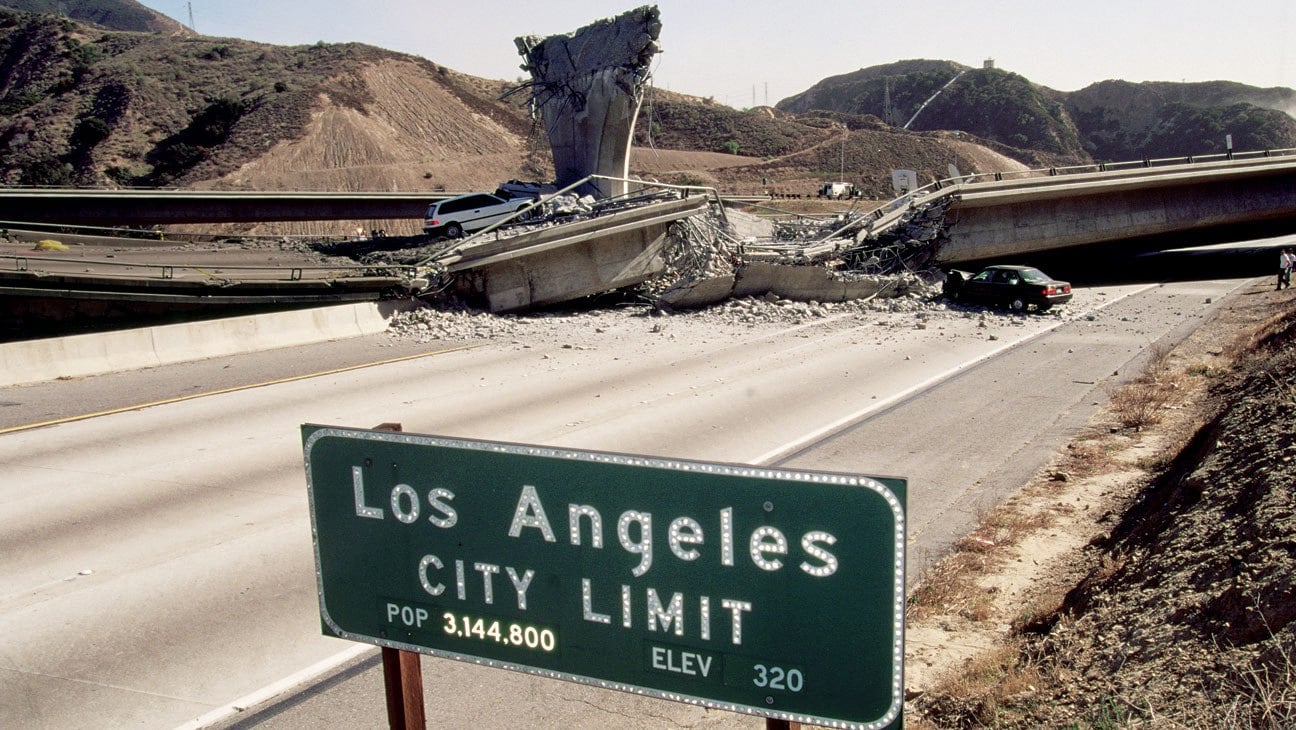Hurricanes Harvey and Irma might be gone for good, but don’t relax just yet. There’s an earthquake overdue in California, and it could leave Los Angeles as epically battered as Houston or Florida Keys.
Earthquakes have long been a part of California life. But why have we become so worried about it recently? Earlier this year, geologists found that large earthquakes happen along Grapevine – just next to Los Angeles – on average every 100 years. The last in the region was the Fort Tejon earthquake in 1857, with magnitude 7.8. It’s been exactly 160 years since then, making a “big one” on this portion of the San Andreas fault “overdue”. The research team estimates that the temblor will be at least magnitude 7.5 or larger, strong enough to rupture the ground for hundreds of kilometers.

San Francisco after the 1989 Loma Prieta earthquake.
If the quake is just as massive as Mexico’s magnitude 8.2 earthquake earlier this month, the shaking people feel will be way worse. While Mexico’s happened deep under the ocean, SoCal’s would strike in a much shallower area inland. To make matters worse, the San Andreas fault sits right underneath densely populated areas.
Since mother nature won’t be changing her mind, the best thing one can do is to just face it and start bracing for it. Some scenarios researchers foresee are:
– Intensity level 10 shaking will occur. That’s a level humans would feel is “extreme”; no one alive today has experienced a tremor that bad in this region.
– 88% of Los Angeles’ water supply could become inaccessible. The aqueducts that transport water into Southern California could get damaged or destroyed.
– Fuel lines carrying gasoline and natural gas, as well as overhead electricity lines, could break and explode. Under certain circumstances, the entire west coast could lose power. Major freeways to Las Vegas and Phoenix could also be ruptured, leaving southern California isolated and without lifelines for some time.
– Fire could spread quickly if the quake strikes in hot weather – that means people waiting to be rescued could get trapped in fire. If it happens on a really rainy day instead, there’s going to be a lot more landslides.
– Dams could also get severely damaged, forcing people to evacuate; this will affect 30,000 people.
On top of all this, there’s also a long-term consequence to consider, given that this could leave LA, arguably one of the most iconic American cities, into a crumbly mess. Cleaning up the catastrophe would take months or years, and researchers worry this will hinder LA’s “ability to be a world-class city”.

What a hypothetical magnitude 8.2 earthquake would look like in Southern California.
The good news is that improvements to earthquake early warning are underway. Early warning can give people a life-saving few seconds to act before the real deal strikes. Last month, the US Geological Survey (USGS) awarded 4.9 million dollars to advance “ShakeAlert”, which aims to send emergency notifications to people on their phones as soon as a significant earthquake is on the way. This works by a network of seismic sensors and data loggers communicating seismic data in real-time. Although the sensor network in California is not nearly as robust as the ones in Japan or Mexico, the USGS just purchased $1 million worth of new equipment to use toward the system.
There’s only so much that early warning can do though. While the scientists are at it, now would be a good time to work on your home and prepare for an emergency kit with essentials you’ll need to camp out for several weeks.

